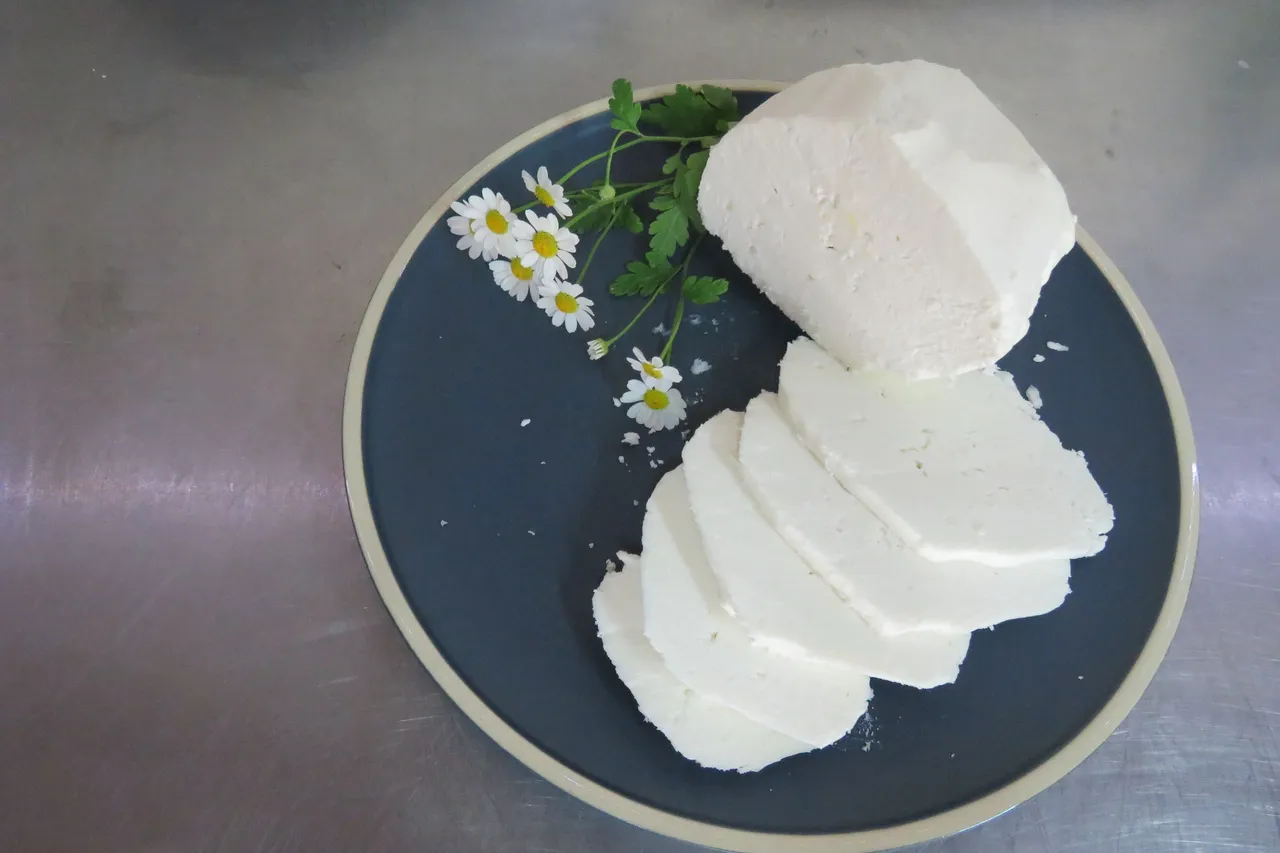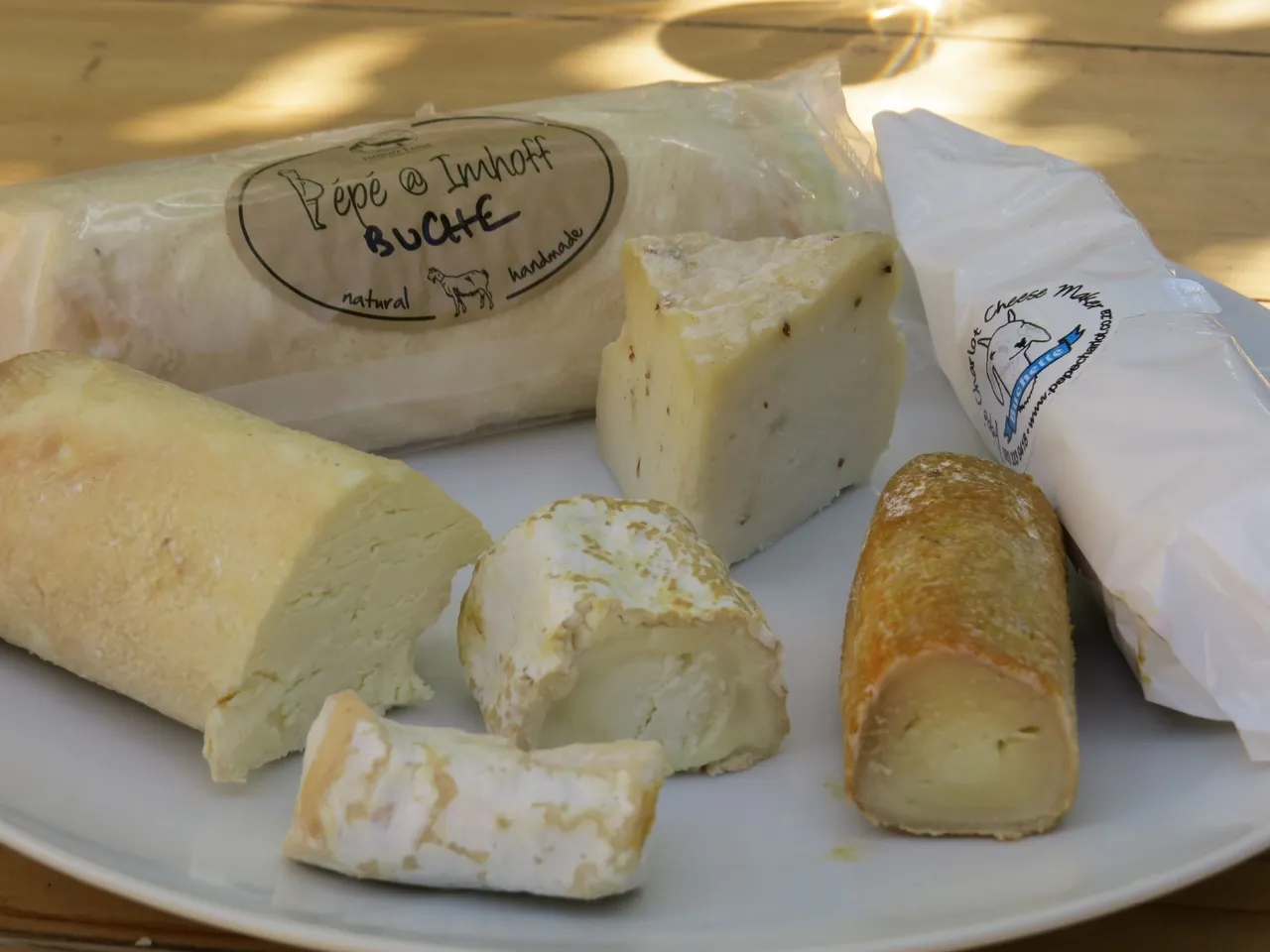
Hearing that I am a goat milk cheesemaker I was visited by a French cheesemaker. He married a South African, adopted South African orphaned children and now resides in Cape Town. He makes wonderful cheese. With goats milk. We had a lot to talk about. He brought samples of his most popular cheeses. I and my goat loving Buckaroo Clan wasted no time in gobbling up the yummy cheeses. We agreed that there is something really special about goats milk that makes for a unique cheese. Part of the flavour, I believe, is due to the love shared between goats and their human matriach.
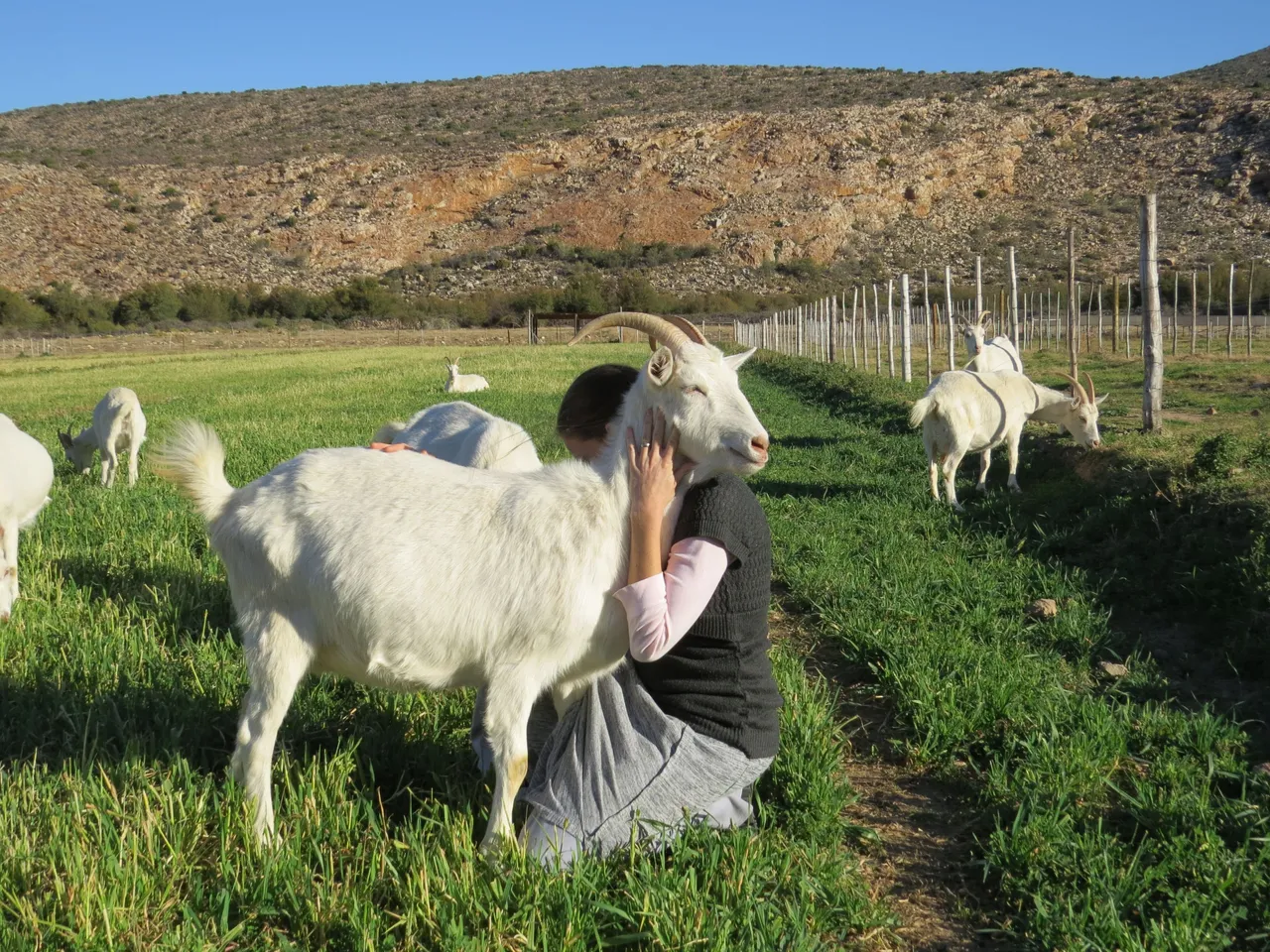
Inspired with new ideas I decided to share my favourite cheese making recipe. Cotija! Earlier this year I shared a simple cream cheese tutorial. Today let's make this unique hard cheese. Cotija is a salty cheddar that hails from Mexican cheesemakers. I love salty foods but what first grabbed me about this cheese is that it doesn't need a long curing process to be ready to eat. Plus: left to mature it is very similar to parmesan. Either way Cotija is delicious and I have been making it for years.
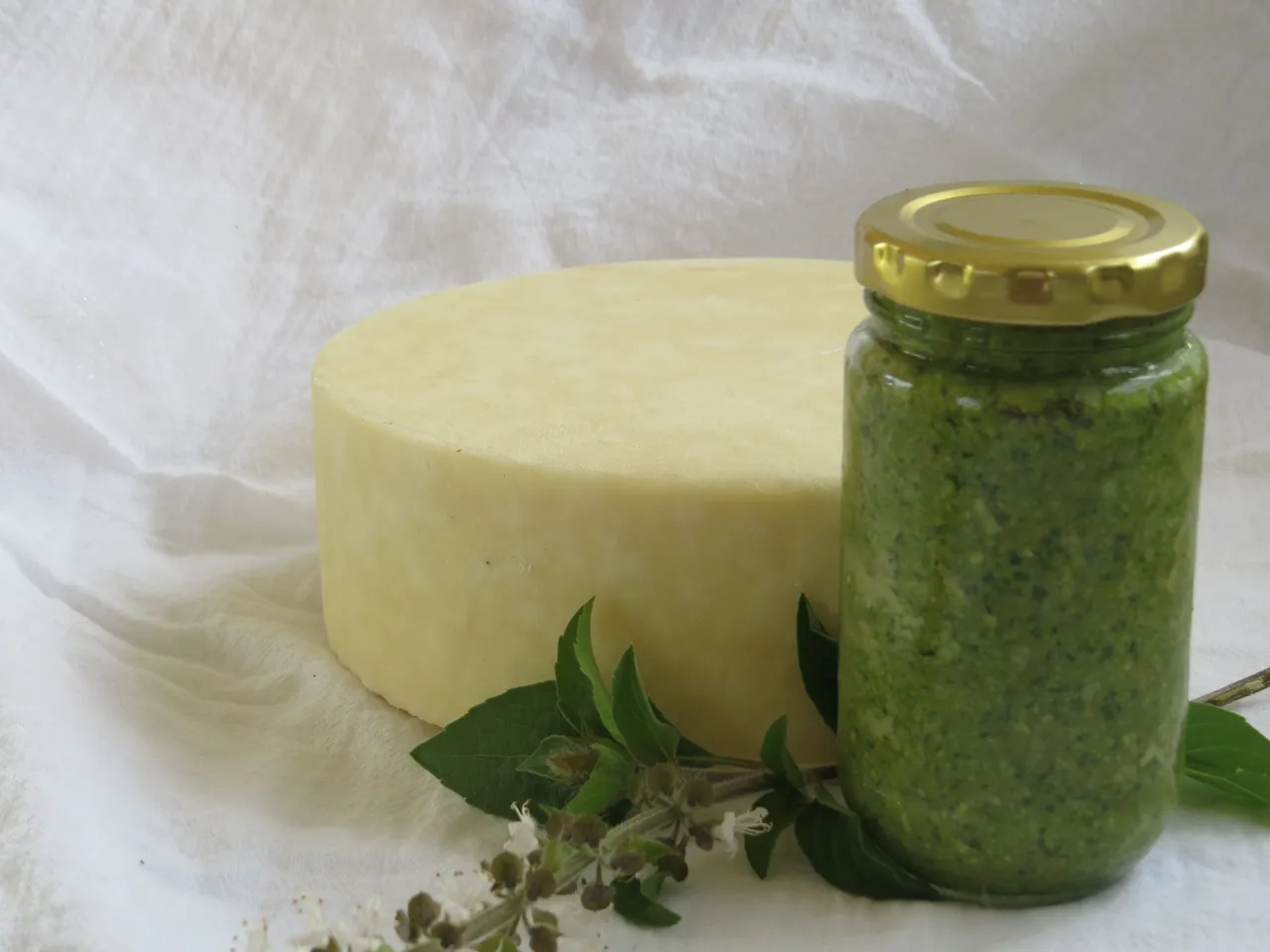
When you start making cheese it need not be overwhelming or complicated. Time consuming yes. But once you grasp the basic rules making cheese is as difficult as most food preparation. There are some essentials to follow to make (almost perfect) cheese: Care of your milk producers being top of the list. I love my beautiful goatie girls. Their health and happiness is a priority to me and it definitely reflects in the sweetness of their milk. Hygienic protocol during the entire processing of the milk goes without saying. Having the right equipment is important. Once you have your rennets and culture, you are good to go!!
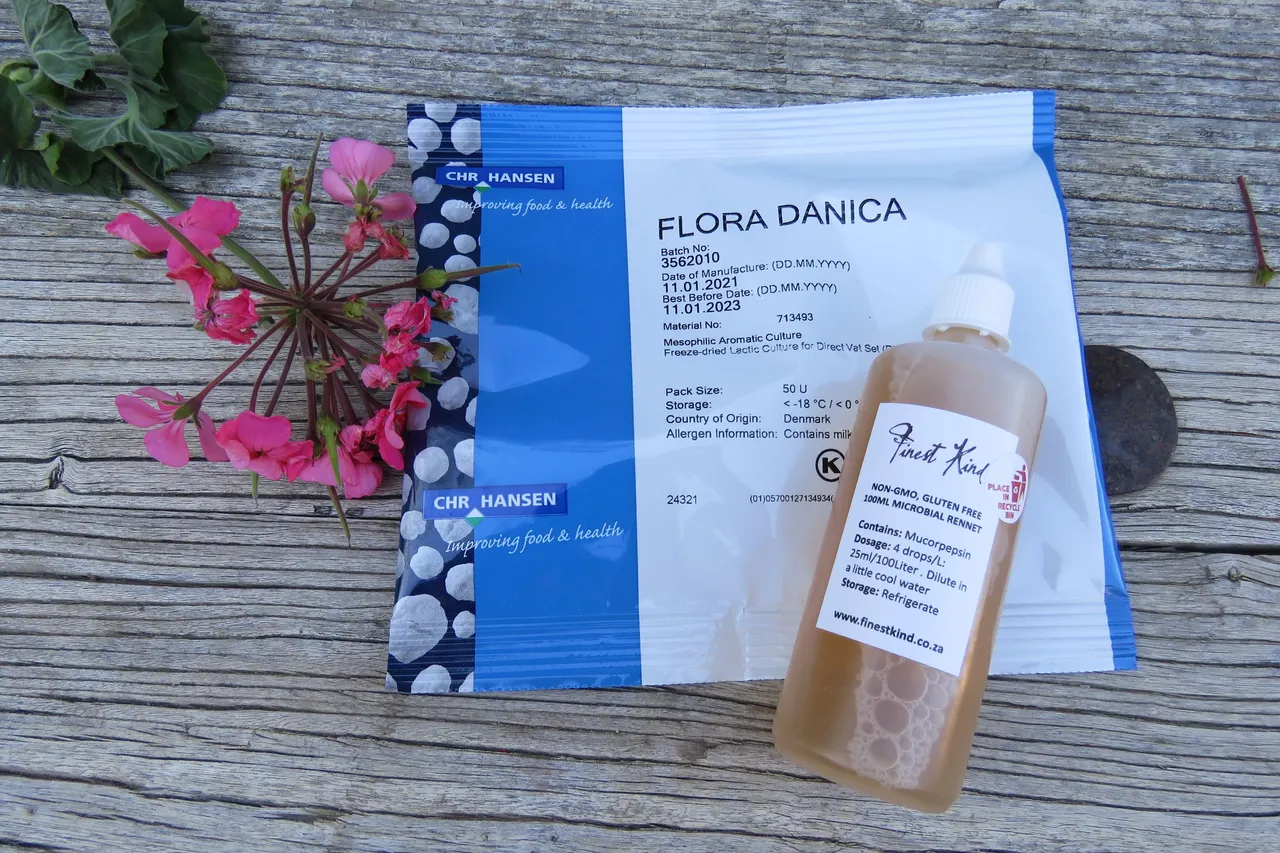
Commercial dairies, both cow and goat, pasturize their milk. They also follow - IMO - not the most ethical handling of their goats. Being hippie organic and a lover of animals my goats roam. I do not inject them or brand them. We abhor the cruel debudding practices and removing babies from their mothers. I refuse to feed my goats GMO or animal protein. Most of the time if I need to treat them it is naturally (unless a crisis). Everything plays a part in the longevity of the animal as well as the purity of the goat milk.
But let's get to the cheese making!!
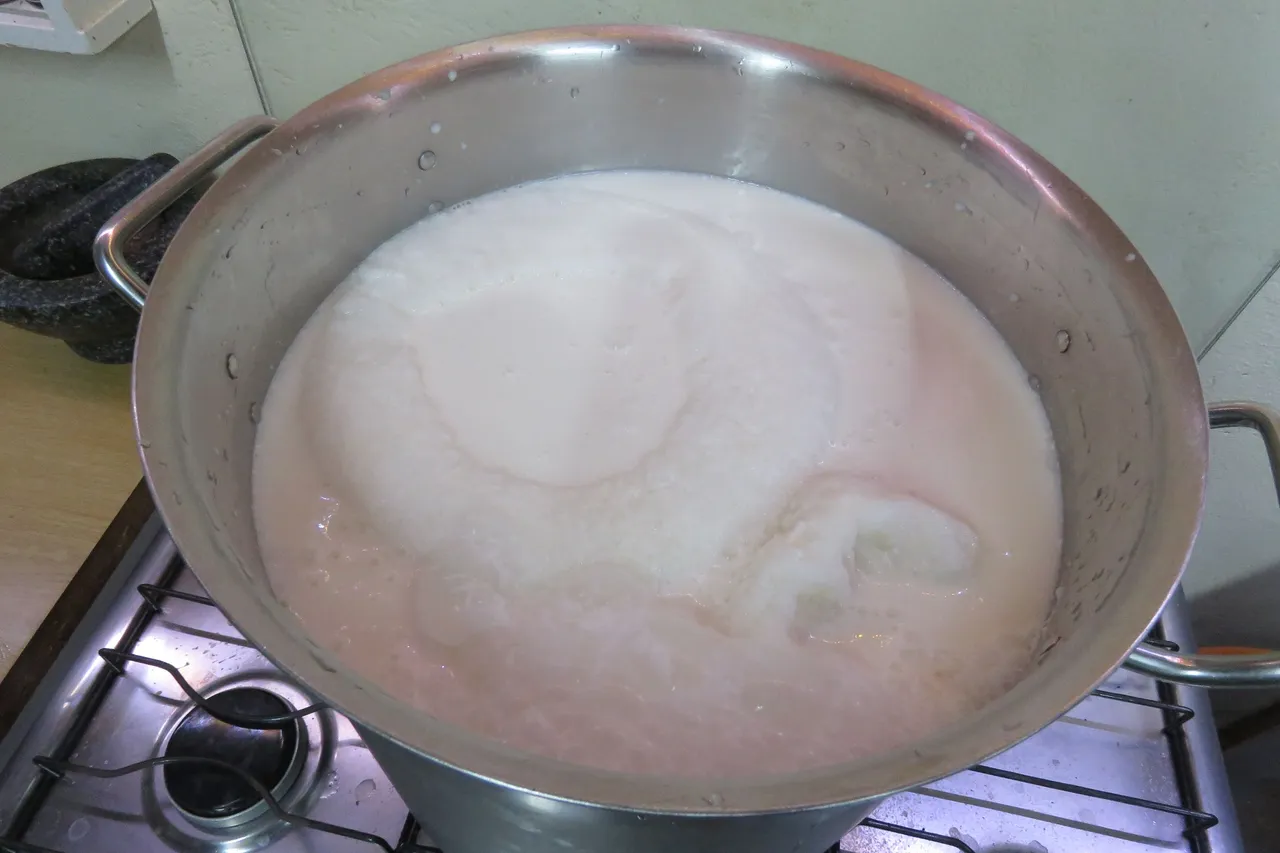
When out of season (while my girls are pregnant) I have to rely on frozen goats milk. The only time I pasteurize milk is to make yoghurt and cream cheese. I still believe the best milk is raw but over the years I have realized that yoghurt and cream cheese is such a finicky food that it is prone to disaster if not first taken through a heating process. Because I have large quantities of goats milk I usually handle 30 litres of milk at a time. But for today we will only use 10 litres of fresh goats milk. When making unpasturised cheese it has to be with milk no older than 24 hours.

COTIJA:
Over a slow heat, or double boiler, warm your 10 litres to 32 C. This is the ideal temperature for (most) cheese. Turn off the heat and stir in your required amount of culture. Now most cheeses require both culture and rennet. Cheese culture goes in first and then rennet. Rennet sets the curd of the milk but first the culture has to convert the lactose into lactic acid by quickly raising the acidity of the milk. With no other bacterial presence outside of the cheese culture the rennet can work. You need to give the culture about 45 minutes to do it's thing - which is begin the fermentation process. Then stir in the required amount of Rennet. At this point you can not touch the pot or you are likely to flop the cheese as badly as you can flop a baking cake! While culture gives flavour and allows the milk to sour (after all cheese is a fermented food) the rennet causes coagulation. This is simply the milk protein curdling. This stage takes roughly an hour. You can generally see the curds. If not do a test by gently scoring with a sterilized knife.
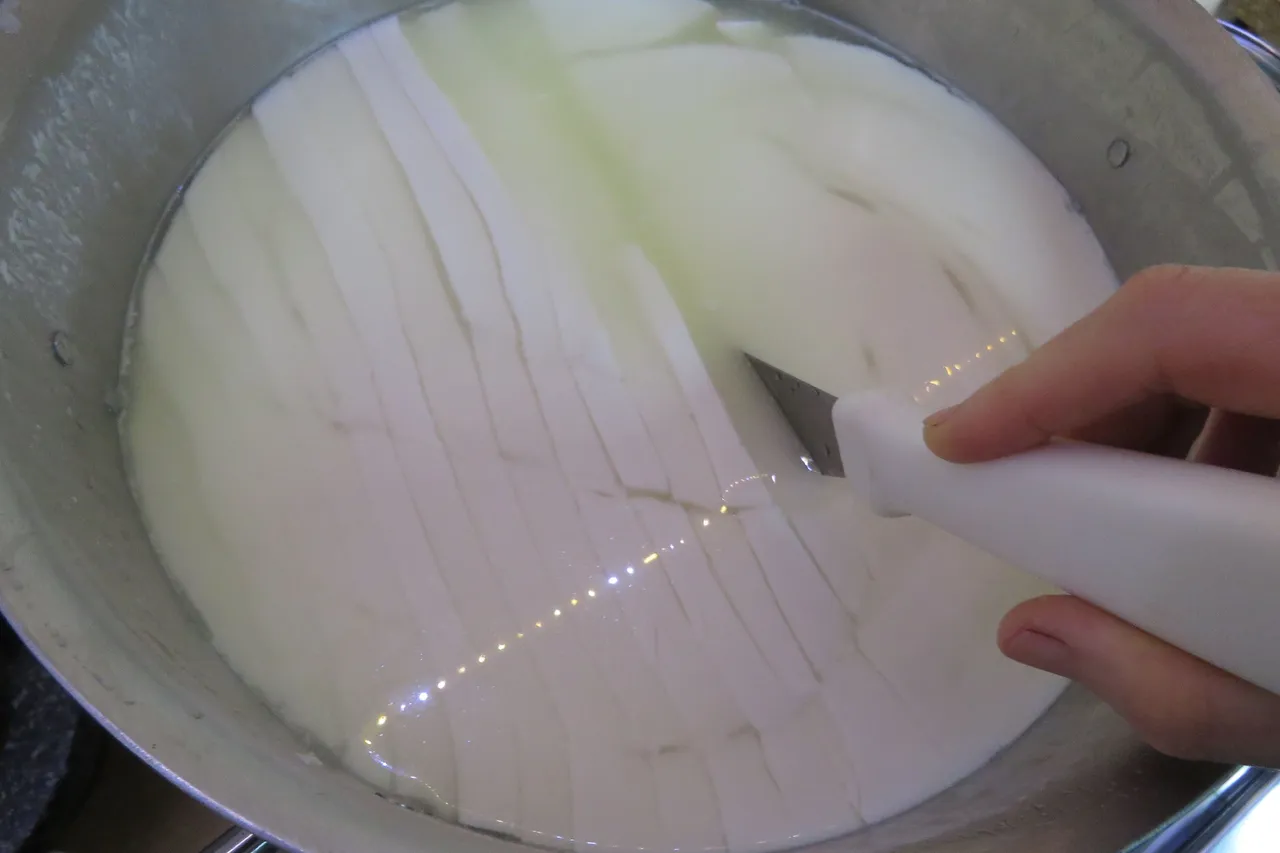
At this point you need to cut the curds slowly. For Cotija the blocks are about 1cm. So top to bottom and side to side across the soft curds. As you cut you will see the whey being released. Give the cut curds 10 minutes to rest before you put the heat on low and gently stir the curds. The idea is to separate as much of the whey from the curds. The curds become really small, especially with goats milk as the lactose molecules are tiny compared to cows milk. This is one reason so many people can drink goats milk while being allergic to cows milk. The lactose in cows milk is almost undigestible to the human gut.
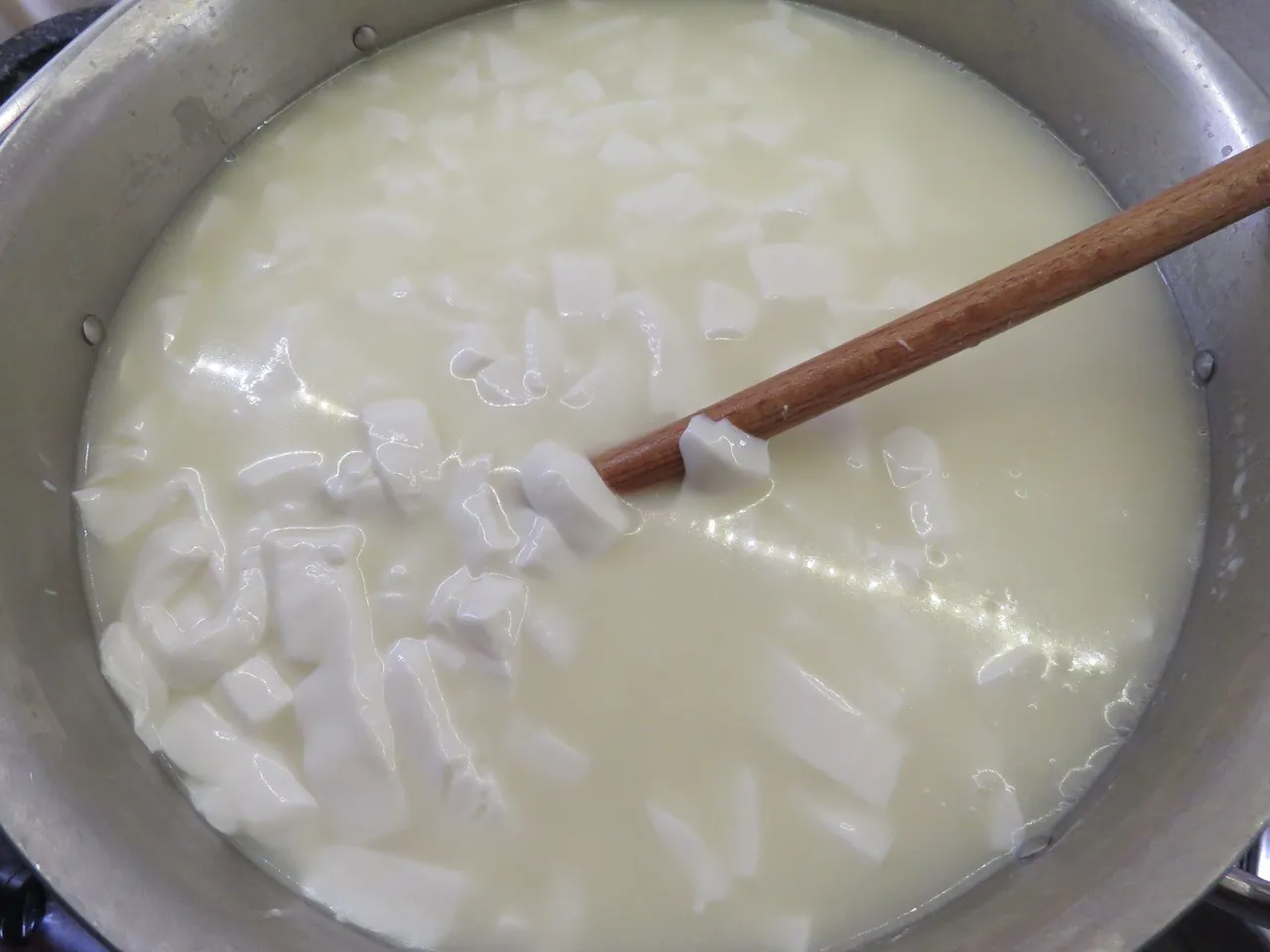
You need to take the temperature of the curds up to 36 C, while slowly stirring. It will take about 20 minutes. Turn off the heat and give the curds another 10 minutes to rest. They will settle to the bottom of the pot, making it easy to scoop the whey off.
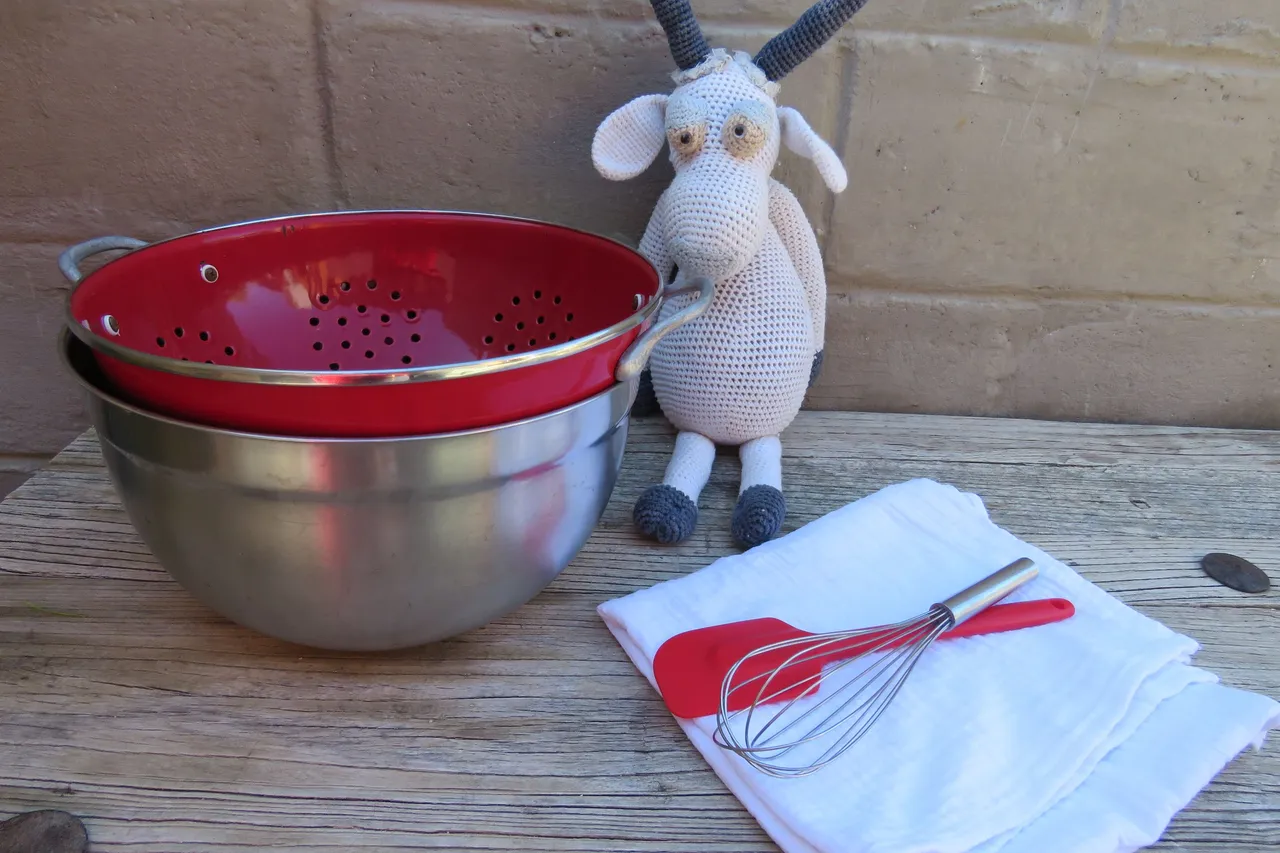
While you wait ensure your equipment is sterilized. If you don't have a cheese press you can use the good old fashioned method of stringing your cheese up in cheesecloth (muslin) for a day or two. With large quantities of cheese I use my cheese press, with the smaller batches it's easier to hang - although the cheeses are not pretty they still taste wonderful!
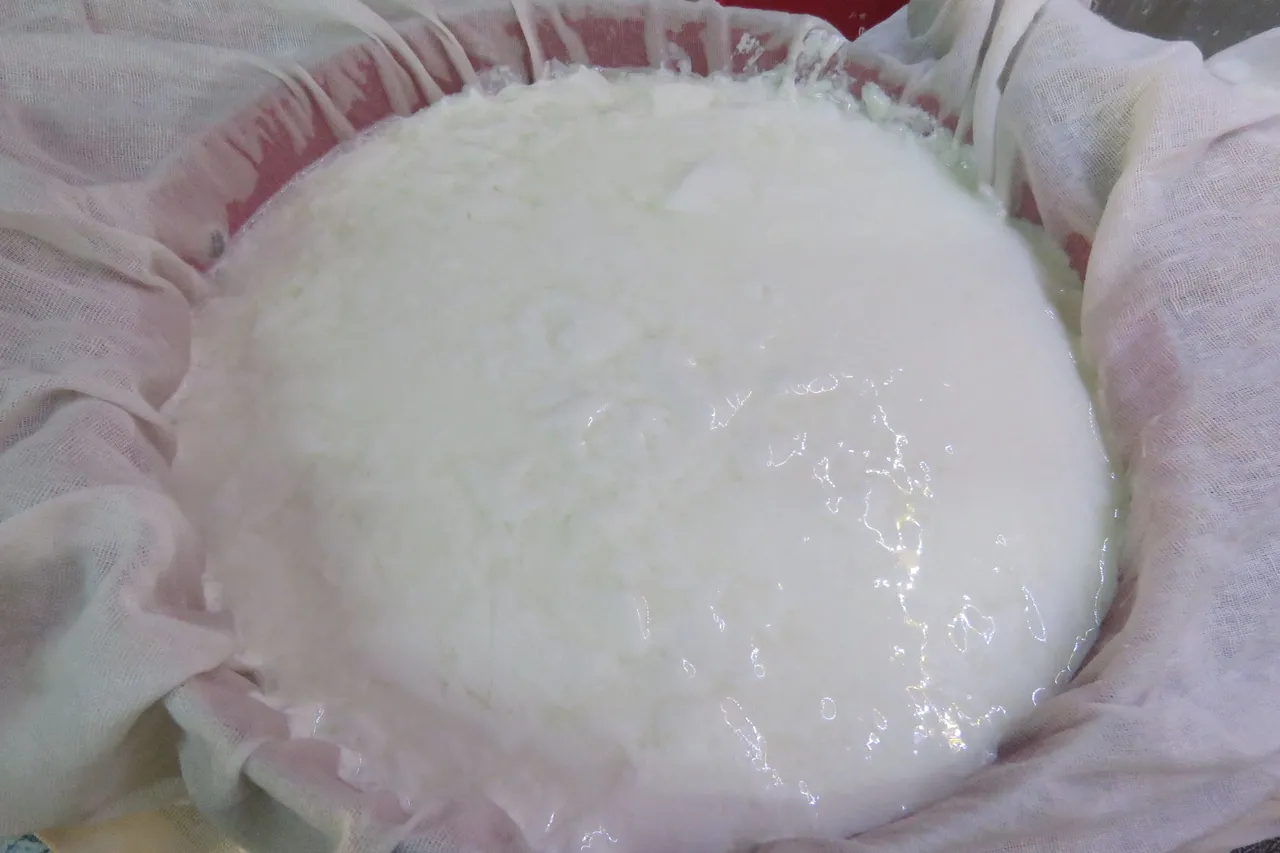
Carefully tip your curds into the colander, lined with the cheesecloth. Give it a couple minutes to run off the excess whey into a bucket. Then hang up. In my case I wrap up the curds in the sterilized cheese molds and apply the required weight. After an hour I flip the cheese and increase the weight. The weight needs to be worked out based on the weight of each cheese. As with the later brining it is quite precise!

At the end of the day I again flip the Cotija. It has begun to take on its beautiful shape but will continue to lose whey for about 24 hours. In the morning I flip again, by this stage you can probably remove the cheesecloth. If you are hanging your cheese don't forget to keep turning and rehanging!
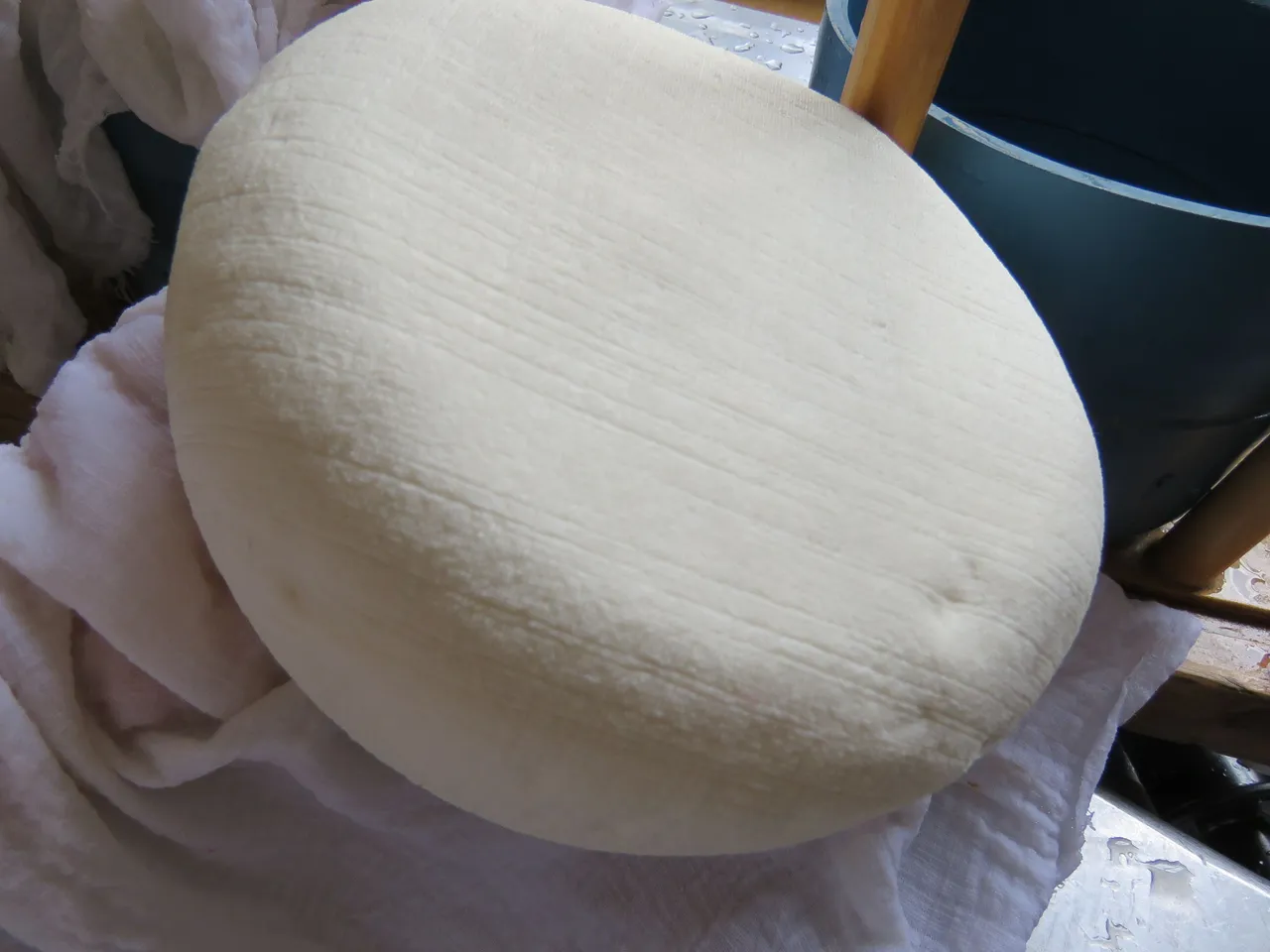
After 24 to 36 hours I make up my brine. Brining is essential for all cheeses. The salt to water ratio differs from one cheese to the next. 10 litres of goats milk converts to roughly 700g Cotija. The conversion is far less than that of cow milk to cheese, again because of the tiny lactose molecules.
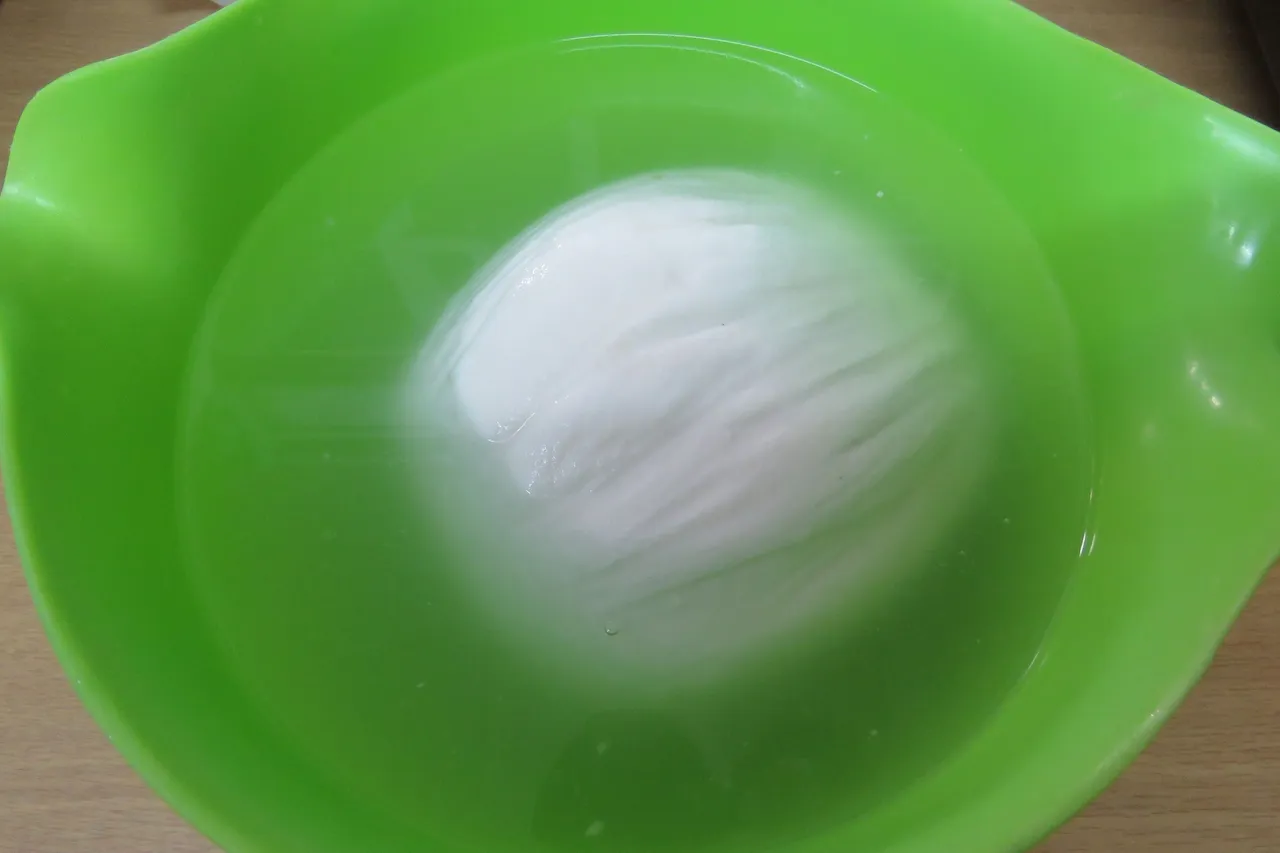
For this size Cotija I make a chilly brine of 5 litres of water to a 1/2 cup of sea salt. Once diluted and chilled pop your Cotija in. It needs to be in the brine for at least 24 hours. Make sure to flip it at least twice for consistent salting. Apart from natural preservation the salt obviously flavours cheese. Once you are finished with the brine lightly towel dry the Cotija and allow to air dry in a sterilized area. It needs natural air flow but protection from bugs or harmful bacteria. This can be tricky! Flip every day and make sure there isn't any moisture that can lead to mould. Rinse in diluted salty vinegar if you suspect bad bacteria. Unlike most other hard cheeses, which take months to mature, Cotija is ready to eat in a week to 10 days. For enhanced flavour leave it longer.
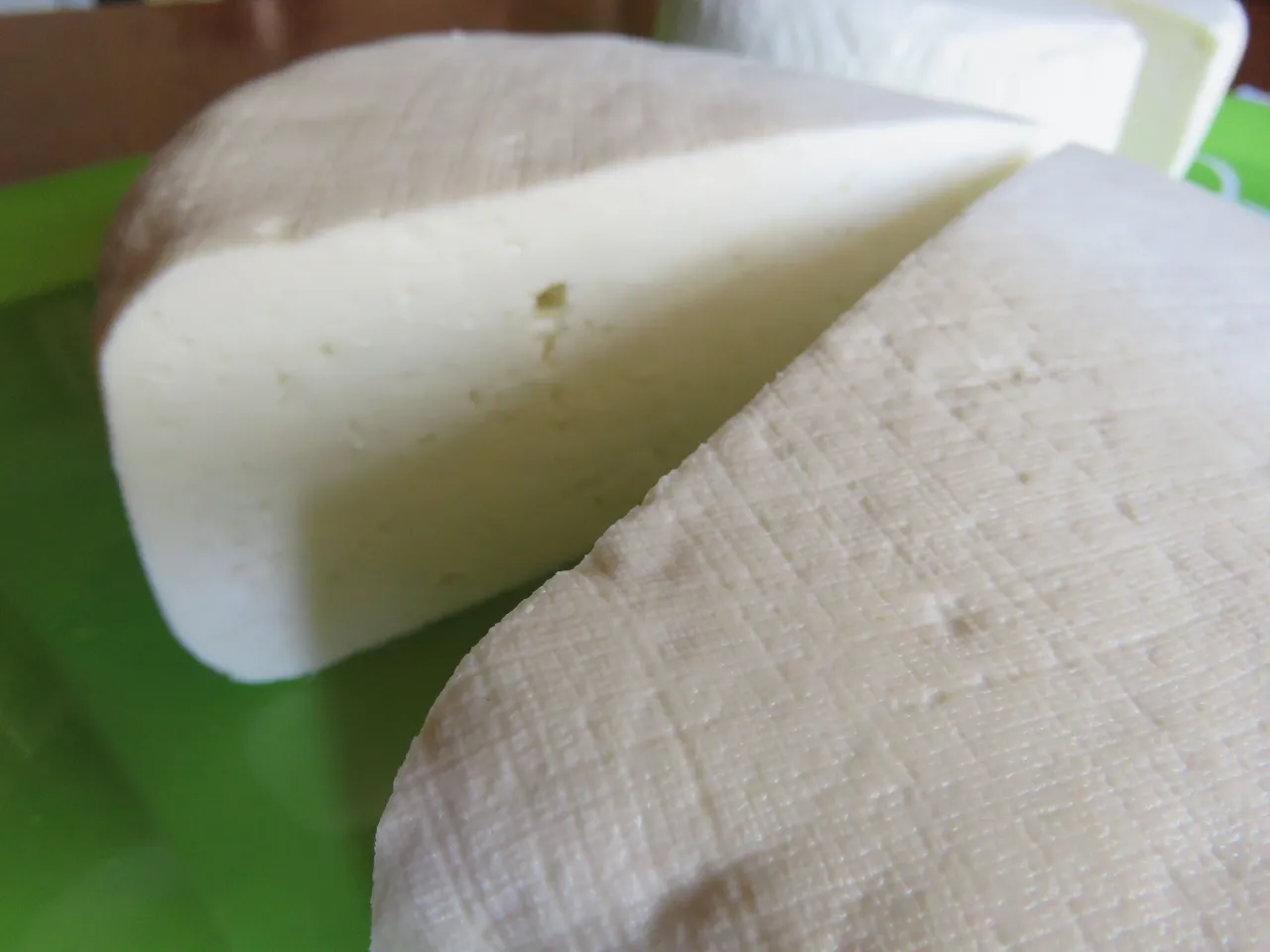
If it weren't for cheese I would probably be vegan. My goats supply us with such amazing milk - how could I say no to making such yummy cheeses? I love the pure white and unique flavours the cheeses make. Of all the foods in the world, cheese is my favourite. It just seemed obvious that I would have to be a cheese maker!
